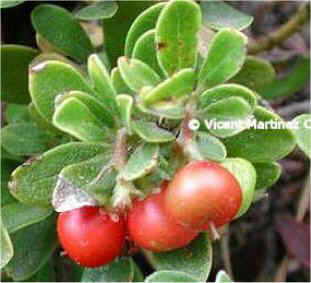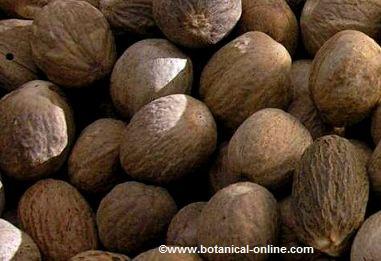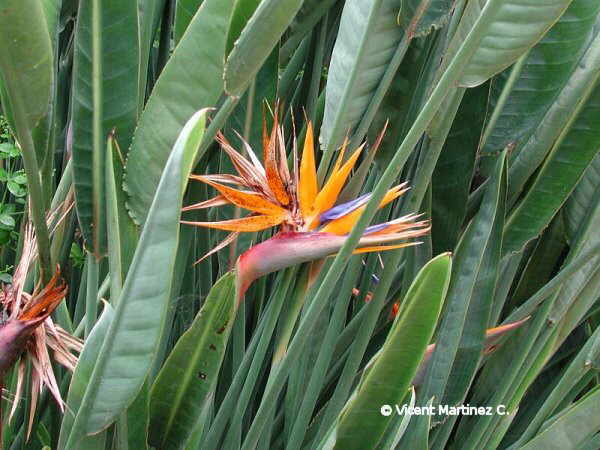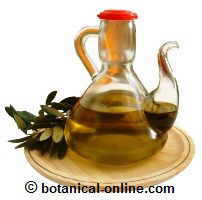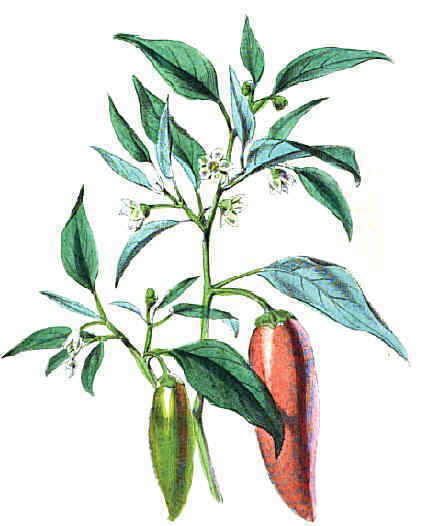Composition of Mexican tea or epazote
EPAZOTE OR MEXICAN TEA IN FOOD
Food properties of epazote
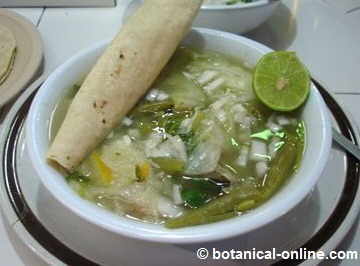
Epazote, Mexican tea, American wormseed or paico (Chenopodium ambrosioides) is an herb with very aromatic leaves, which is used in food to add flavor to dishes.
Epazote leaves are used in small quantities, as they have a strong and penetrating flavor, very characteristic, a little bitter, with a slight spicy nuance similar to that of savory, and a flavor reminiscent of armuelle or sorrel.
Benefits of eating epazote: What nutrients does it provide?
- Epazote is an aromatic herb, which in the quantities consumed does not represent a significant contribution of calories or macronutrients (proteins, carbohydrates, fats, fiber).
- The herb provides certain amounts of potassium, a mineral that helps balance the body’s fluids, preventing fluid retention caused by excess salt.
- The essential oil of the plant (responsible for its intense smell) contains ascaridol, an active ingredient with carminative properties. Due to these properties, epazote helps eliminate gases from the digestive tract, avoiding the gases that can appear with flatulent foods, such as legumes.
- Epazote can be consumed as a vegetable, boiled with potato and a dash of oil. In this case, epazote is a vegetable that provides a lot of fiber, carotenes, folic acid and, above all, a lot of magnesium, an important mineral for bone mineralization and muscle relaxation, very suitable when there is stress. However, because of its oxalate content, epazote should not be eaten in large quantities.
- Epazote or Mexican tea is an emmenagogue herb, that is, it facilitates menstruation. People with excessive bleeding problems, endometriosis, or pregnant women should not take this herb.
NUTRITIONAL COMPOSITION TABLE OF EPAZOTE
| Composition of raw epazote per 100g. | |
| Water (g) | 89,21 |
| Calories (Kcal) | 32 |
| Fats (g) | 0,5 |
| Carbohydrates (g) | 7,4 |
| Proteins (g) | 0,33 |
| Fiber (g) | 3,8 |
| Potassium (mg) | 633 |
| Phosphorus (mg) | 86 |
| Sodium (mg) | 43 |
| Calcium (mg) | 275 |
| Zinc (mg) | 1,1 |
| Selenium (mcg) | 0,9 |
| Magnesium (mg) | 121 |
| Vitamina C (mg) | 3,6 |
| Vitamina A (UI) | 57 |
| Vitamin B6 (mg) | 0,15 |
| Thiamin (mg) | 0,03 |
| Riboflavin (mg) | 0,35 |
| Niacin (mg) | 0,64 |
| Folic acid (mcg) | 215 |
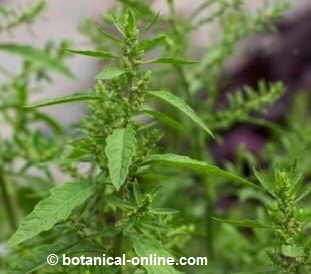
Photo of epazote in flower
How to eat epazote?
In general, epazote is a very aromatic herb. The leaves are added raw in small quantities to give flavor to dishes, or a sprig is added in the preparation of soups.
If you want to consume it as a vegetable, there are a number of tips that should be taken into account:
- Epazote contains a certain amount of oxalates, components also present in other vegetables such as spinach, which sequester calcium and which in excess can cause kidney stones. If taken as a vegetable, that is, in abundant quantities, it is necessary to boil the herb to reduce its oxalate content, and it is recommended to accompany this meal with some food rich in calcium (sesame, nuts, yogurt, etc. ). The leaves should not be steamed, but rather boiled and discarded the broth, because the water carries away the oxalates. People with rheumatism, arthritis, gout, kidney stones, or heartburn should consume epazote in small quantities, since eating too many oxalates can aggravate the symptoms of these diseases.
- Depending on the plant, epazotes also contain saponins, components that form a foam in the cooking water when boiled. In general, the amount contained in most epazotes is very low, and is reduced during boiling.
Recipes and dishes with epazote
Epazote is one of the most characteristic flavors of Mexican cuisine.It is generally consumed as an aromatic herb, in small quantities, to flavor to dishes. A handful of twigs can be used in soups, mushrooms, fish, seafood, legumes, stews, quesadillas, etc.
The most traditional dishes with epazote are found in Mexican cuisine:
- Frijoles charros (Charro beans): Beans cooked in a pot with sofrito and different parts of the pig. It is presented with some tender epazote leaves on top.
- Tikenxik or Tikin-xic: Traditional dish from the Yucatan Peninsula (Mexico), prepared by the Mayans. It consists of fish (palometa fish) marinated with achiote and cooked over a fire with tomatoes and other ingredients, including the herb epazote.
- Mole Verde: Spicy green sauce, used to accompany meat dishes. One of the herbs it contains is epazote.
- Esquites o chacales de parral: Traditional Mexican dish (Chihuahua). In general, it is prepared by boiling elotes (tender corn cob) with onion, they are shelled and sautéed in a pot with butter and some epazote leaves. Add 3 cups of broth water, and cook until consumed. It is served with a little grated cheese, sprinkled piquin chili and lemon juice.
- Papadzul: Traditional dish from the Yucatan Peninsula (Mexico). Tomatoes, habanero chiles and a tender branch of epazote are boiled. Chop the ingredients, add chopped hard-boiled egg and chopped onion. Then it is wrapped in a pumpkin seed tortilla, which has been made with the toasted seeds, ground and kneaded with a little water from the tomato broth.
- Quesadillas: They are a typical Mexican dish consisting of a food or recipe (cheese, pumpkin flower, meat, etc.) wrapped in a tortilla or corn cake and cooked on the comal or griddle. Most traditional quesadillas have s few leaves of epazote as an ingredient to give flavor.
. Cheese quesadillas are prepared with Oaxaca cheese (string cheese) and a leaf of epazote.
. Pumpkin flower quesadillas with epazote: Squash flower quesadillas with onion cooked in their juice and some epazote leaves.
. Huitlacotxe or cuitlacoche quesadillas: Edible parasitic fungus of corn. Traditionally it is fried with chopped onion and garlic, and some epazote leaves. It is eaten in quesadillas.
- Tamal (tamale): Some tamales contain epazote as an aromatic herb.
- Soups: Many soups from Mexican, Guatemalan and Peruvian cuisine have epazote as an ingredient, such as lime soup, corn soup, tlalpeño broth, paico soup, chupe verde, etc.
![]()
Medicinal uses of epazote
Epazote is also a medicinal plant, widely used by the native population. Ethnobotanical treatises on New World herbs describe the uses that the native population had for this plant, mainly against intestinal parasites that affect both humans and domestic animals.
![]() More information on epazote or Mexican tea
More information on epazote or Mexican tea


